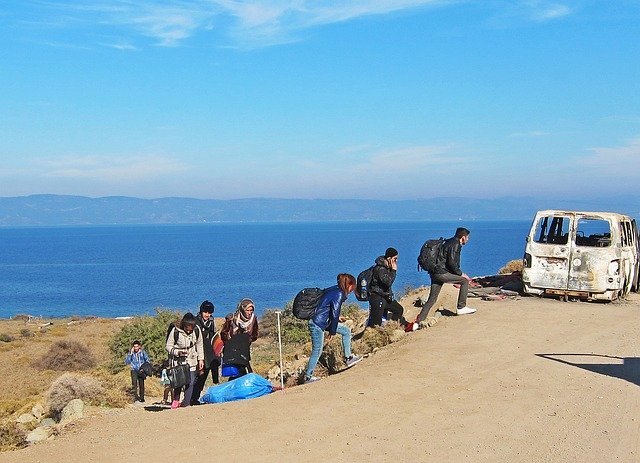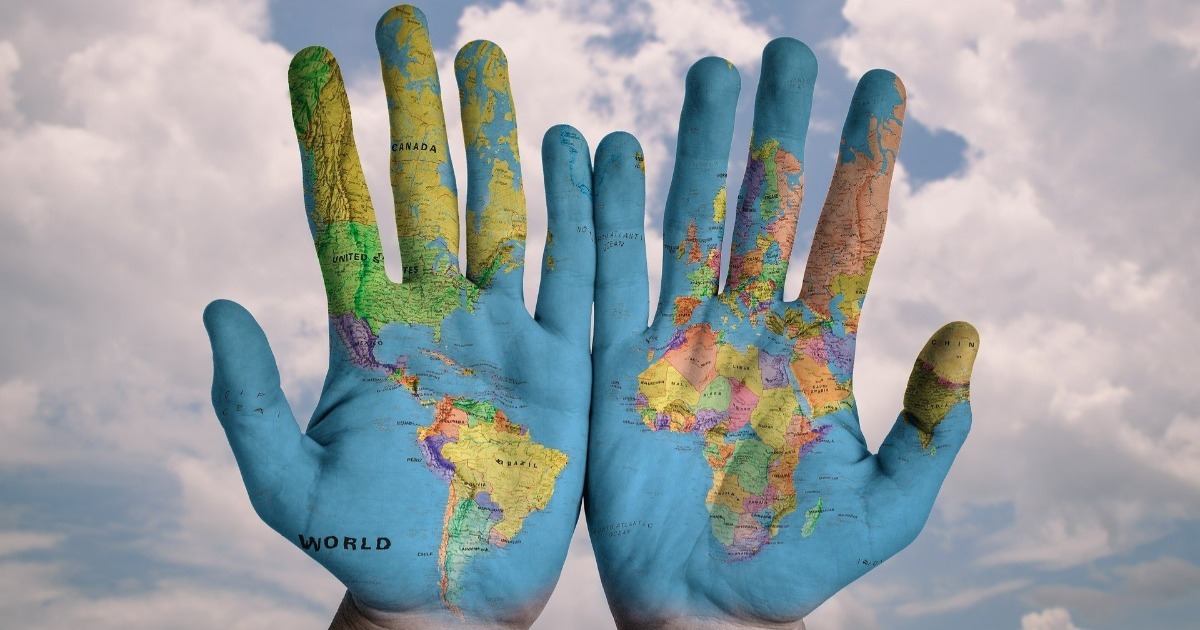The causes and consequences of migration are political, social, economic or cultural situations that drive people to leave their place of origin or arrive at their destination. Generally, these are factors that detract from the quality of life and that the migrant tries to solve by moving from his or her city or country.
For example, one of the causes of migration in Mexico, which is common in Latin America, has to do with poverty. This makes it difficult for many families to improve their living conditions and they are forced to migrate internally, changing cities or leaving the country temporarily or permanently.
There are, then, two main types of migration: internal, when it is done within the country’s own territory, or external, when it leaves the country. But there are also other types, depending on the length of stay, the age of the migrants, the destination chosen, etc. All of them are driven by certain causes and have consequences both in the place of origin and in the final destination.
Causes of migration

They refer to the migrants’ motivations for leaving their place of origin. These causes may be political, economic, social, cultural, ecological or due to armed conflict, as described below.
1. Political: coups d’état, political violence, persecution.
Political conflicts in a country can drive migration depending on the seriousness of the case. Coups d’état, instability in the alternation of power, disrespect for the expression of popular will, etc., generate a situation of instability that usually forces migration.
When a person is persecuted for his political ideology and must leave his country voluntarily or because he was expelled by the authorities, he is called a political refugee.
For example, the current Chinese government’s pressure against political dissidents has led many of them to leave the country after being persecuted or imprisoned. This is the case of human rights activist Teng Biao.
2. Economic: extreme poverty, hyperinflation, shortages.
The level of economic development of a country directly affects the quality of life of its inhabitants. Therefore, countries with severe economic crises are often a breeding ground for migratory processes, as their inhabitants must move in search of more or better income to survive.
An example is Venezuela, whose severe hyperinflationary crisis, coupled with food shortages and deteriorating public services, has generated an estimated migration of seven million people by 2020, according to UNHCR figures. This is equivalent to the population of Paraguay by 2021.
Another example is Haiti, a country with a severe economic crisis, which has generated the migration of 14% of its population by 2019, according to UN data. These displacements are mostly to the Dominican Republic.
3. Cultural: study abroad
The desire to learn about and integrate other cultures into one’s own is also a cause of migration, especially among the younger population. University studies, graduate studies or language courses are usually the most common ways to migrate, either temporarily or permanently.
A very common example in Europe is the Erasmus program, which promotes the mobilization of students from a large part of the European economic community. They can study for three to twelve months in another European country and upon their return, their studies abroad are recognized by their university.
4. Social: insecurity, unemployment
Migration may be driven by difficulties in the social environment that detract from the quality of life of the migrant and his or her family environment. Insecurity and unemployment are common causes of migration in Latin America, which promotes mobilization to other countries within or outside the continent.
For example, one of the causes of migration in Mexico has to do with insecurity, expressed in assaults, robberies and violence generated by drug trafficking cartels operating in the country. These situations have stimulated migration within and outside the territory, in this case to the United States.
5. Ecological: natural disasters, effects of climate change.
These causes are related both to natural disasters (earthquakes, hurricanes, floods, etc.) and to the effects of climate change (desertification, disappearance of drinking water sources, extreme temperatures, etc.). These situations often generate forced migrations, since the inhabitants of the territory must leave their place of residence in order to survive.
An example is the islands that make up the Kiribati archipelago in Oceania. As a consequence of climate change there is a progressive increase in sea level. This situation will lead to the disappearance of all the islands by 2035. For this reason, many of its inhabitants have already left the islands, and the migration crisis is expected to worsen as the situation worsens.
6. War: civil wars, hostility from foreign forces.
Wars, whether between forces within the same territory or between countries, generate a situation of anxiety that forces people to move in order to preserve their lives. Wars are often the consequence of political conflicts, which is why they are two closely related causes of migration.
One example is the war in Afghanistan, which began in 2001 after the September 11 attacks in the United States. Since its inception, it has generated waves of mass migration to different countries in Europe.
See also:
Consequences of migration

What happens when migrants arrive at their destination? Exchanges between migrants and the local population can have political, economic, cultural and social consequences. In addition, migration can have mental health effects on individuals. All these causes are described below.
Policies: changes in the laws of entry to the country 2.
Migration can generate changes in the policies of receiving countries, either to make laws more flexible and allow the entry of migrants, or to make them stricter and discourage new entries.
Migration can be used in political discourse to propose or promote xenophobic measures, especially in those countries that have received massive waves of migrants.
In 2017, for example, then U.S. President Donald Trump proposed the creation of a border wall between the United States and Mexico to stop irregular migration. This proposal was severely criticized, especially by the Mexican government.
2. Economic: increased labor force in the host country.
Mass displacements have a direct impact on economic indicators, both in the country of origin and in the receiving country. A country whose labor force has migrated cannot produce, and if it does not produce, it does not generate income. This in turn results in lower employment, higher inflation, increased poverty levels, etc.
On the other hand, at the destination, the arrival of potential workers can have a positive impact. Migrants help to diversify the labor force, and when their situation is regularized they begin to make tax contributions to the receiving state.
One example is data from BBVA Research, which indicates that the economic impact of Venezuelan migration in Peru helped increase that country’s Gross Domestic Product by 0.08% between 2018 and 2019. This is about $175 million extra dollars for the Peruvian economy generated by Venezuelan workers.
Another relevant aspect is the money sent by migrants to their families in the countries of origin (remittances). In 2020, the money sent by Mexican migrants to their country represented an equivalent to 3.8% of Mexico’s Gross Domestic Product, according to a report by BBVA Research. This would be about 39 billion dollars for the Mexican economy.
3. Cultural: mestizaje, cultural exchange.
Migration generates new cultural dynamics that are expressed in an exchange of experiences, languages, customs and traditions that in the long term may even mix. Migration favors miscegenation and enriches the culture of the receiving country.
An example is the European migrants who arrived in Latin America at the end of World War II. In addition to integrating into the destination countries (Venezuela, Colombia, Chile, Argentina, etc.), they also shared their cultural legacy, which is expressed in the enrichment of language, miscegenation and gastronomy.
4. Social: demographic changes, xenophobia
Migration generates a redistribution of the population in the place of origin and in the place of destination. In the place of origin, there may be a decrease in the young population and an increase in the adult and/or elderly population. In the long term, States will have to take care of a growing economically inactive population (retirees) while the growth of the productive population is slow or stagnant.
In the country of destination, demographic changes may be expressed in an increased demand for people in need of employment, access to health and education, as well as an increase in local consumption.
As a consequence of these changes the local population may feel threatened. This uncertainty, and the problems that already existed in that place before the migratory wave, may generate xenophobic ideas, such as the assumption that foreigners are taking their jobs or that crime is due to the presence of migrants.
5. Psychological: stress, anxiety, depression
Migratory processes can be very difficult in psychological terms. Especially when it comes to forced migration, when people are minors or when the mobilization is done alone.
The way of coping with the migration process varies from person to person. In some cases, they may experience sadness for what they left behind, uncertainty and fear of the unknown. In more severe cases, migrants may experience anxiety, depression or post-traumatic stress syndrome, especially in cases of migration caused by war or violence.
An example can be seen in the integration processes of migrant children. In some cases, they may experience stress at the idea of starting a new school, understanding another language or making new friends, while at the same time dealing with homesickness caused by being away from friends or family.
See also Nomads and sedentary people




